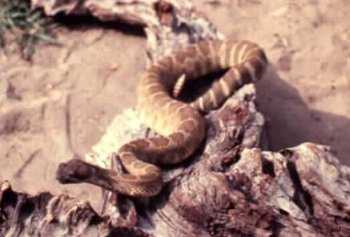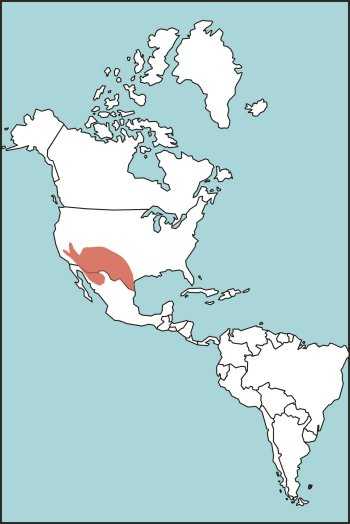Appendix E
DESCRIPTIONS OF VENOMOUS SNAKES
Mojave rattlesnake

Mojave rattlesnake
Crotalus scutulatus
Description: This snake's entire body is a pallid or sandy color with darker diamond-shaped markings bordered by lighter-colored scales and black bands around the tail.
Characteristics: Although this rattlesnake is of moderate size, its bite is very serious. Its venom has quantities of neurotoxic elements that affect the central nervous system. Deaths have resulted from this snake's bite.
Habitat: Found in arid regions, deserts, and rocky hillsides from sea level to 2400-meter (7920-feet) elevations.
Length: Average 75 centimeters (29 inches), maximum 1.2 meters (4 feet).
Distribution: Southwest United States, particularly in the Mojave Desert in California, Nevada, southwest Arizona, and Texas into Mexico (Figure E-15).
Figure E-15. Mojave Rattlesnake Habitat
Survival index
All text and images from the U.S. Army Field Manual 3-05.70: Survival.
Appearance of the materials from the U.S. Army Field Manual here does not constitute or represent endorsement by probablyhelpful.com.
ProbablyHelpful.com is not responsible for inaccurate or outdated information provided by the U.S. Army Field Manual 3-05.70.

